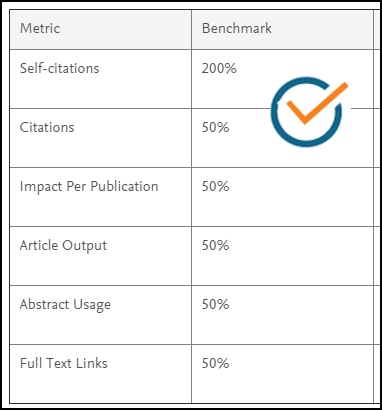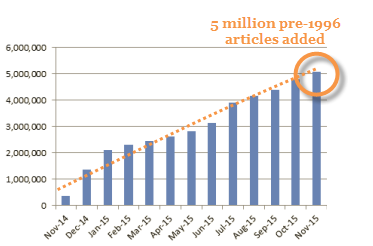Scopus 2015 Review, Part 1: More content, but not at the expense of quality
As 2015 comes to an end, it’s time to reflect upon the year and look at how Scopus has, and will continue to, evolve. Over the next 3 days we share key 2015 Scopus developments and their impact on the researcher. Each post will cover a different focus. This post, part 1, covers content expansion and quality. The next post, part 2, discusses features and functionality. And the final post, part 3, will look at data partnerships.
In terms of content, Scopus has been growing exponentially (reaching over 60 million by the end of December), but this is not at the expense of quality. Here are 3 things to know about what’s changed for Scopus content in 2015:
1.) CSAB implements additional content quality measures. High content quality has always been important to Scopus and why the independent Scopus Content Selection and Advisory Board (CSAB) was established in 2005. The board already maintains and follows a robust selection policy for any new title being considered for inclusion in Scopus; however this year, as an incentive for journals to maintain their high content quality, the CSAB implemented a title re-evaluation process whereby titles must meet six quality metrics and benchmark criteria, or risk reconsideration and possible discontinuation in Scopus.
What does this mean for the researcher? As the quality of its content is continuously reviewed, researchers can trust Scopus for comprehensive, reliable and trustworthy content.
Read about the content selection policy and process
2.) Cited references now go back to 1970. This year the number of pre-1996 records re-indexed to include cited references reached 5 million updated records by November and contributed to over 93 million references added to the database.
What does this mean for the researcher? Scopus provides long-term, extensive bibliometric and historic trend analyses. Additionally, more complete pre-1996 records mean more complete author profiles and h-index measurements for individuals who began publishing prior to 1996 — providing all researchers with better insight into key field influencers and leaders. Read more
3.) 120,000 more book titles. The Scopus Books Expansion is nearly complete and on target to reach 120,000 books by year end.
Throughout the year, book content has increased by over 40%. With over 50% of the book content added representing the arts and humanities and social sciences; this is of particular importance to those communities.What does this mean for the researcher? There is a threefold impact to including quality book content in Scopus; it significantly increases subject area coverage for book-based disciplines, fosters interdisciplinary collaboration across subject areas, and fills a gap in evaluation methods. Read more
To learn more about 2015 highlights relating to features and functionality and data partnerships, read parts 2 and 3 of this series which will be posted over the next few days.
We also invite you to attend the first 2016 Scopus webinar coming in January. This webinar will include a complete overview of Scopus and help ensure you are using the database, and its many tools, to its fullest potential. Go to the webinar page here to register.




